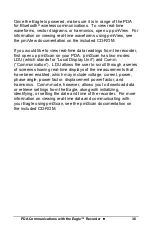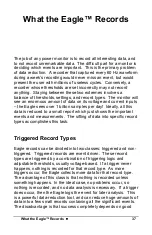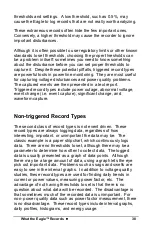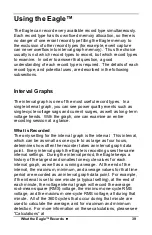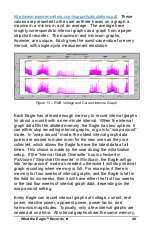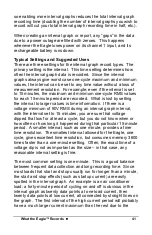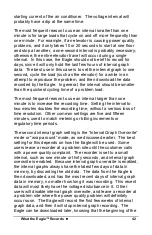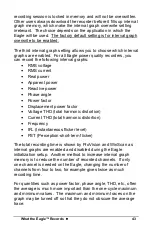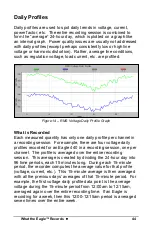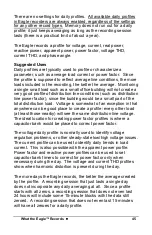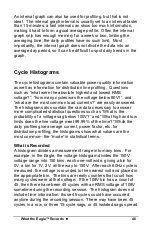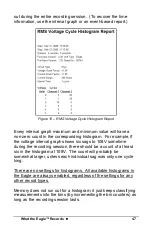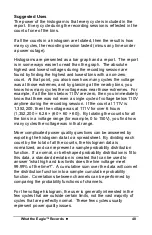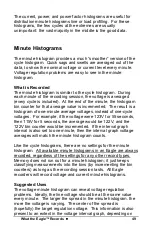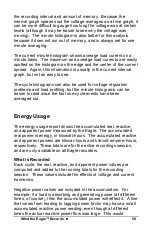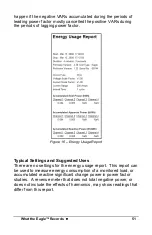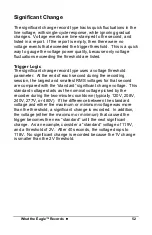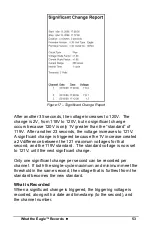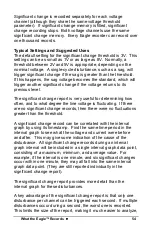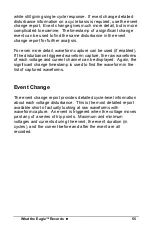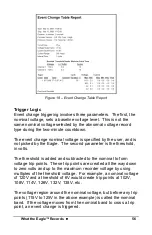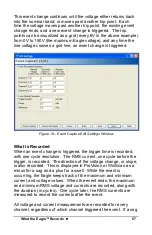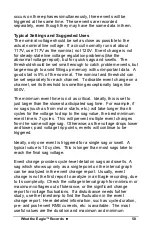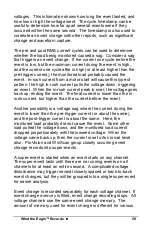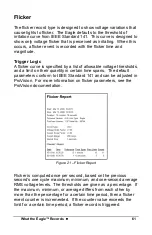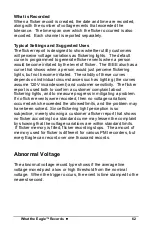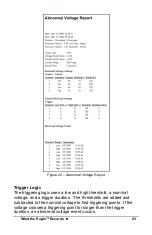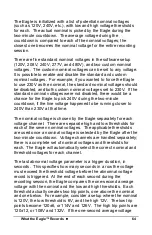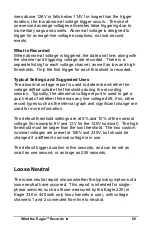
What the Eagle™ Records
••••
50
the recording interval and amount of memory. Because the
interval graph spreads out the voltage averages as a time graph, it
can be more difficult to gauge how long the voltage was at certain
levels (although it may be easier to see why the voltage was
moving). The minute histogram is also better for this analysis
because it does not run out of memory, and is always set for one
minute averaging.
The current minute histogram shows average load current on a
minute basis. The maximum and average load currents are easily
spotted on the histogram as the edge and the center of the current
spread. Again, this information is usually in the current interval
graph, but not as easy to see.
The cycle histograms can also be used for voltage regulation
problems and load profiling, but the minute histograms can be
easier to read since the fast one-cycle events have been
averaged out.
Energy Usage
The energy usage report shows the accumulated real, reactive,
and apparent power measured by the Eagle. The accumulated
real power is energy, in kilowatt-hours. The accumulated reactive
and apparent powers are kilovar-hours and kilovolt-ampere-hours,
respectively. These totals are for the entire recordings session,
and are only available on all Eagle recorders.
What is Recorded
Each cycle, the real, reactive, and apparent power values are
computed and added to the running totals for the recording
session. These values include the effects of voltage and current
harmonics.
Negative power values are included in the accumulation. For
example, if a load is absorbing and generating power (at different
times, of course), then the accumulated power will reflect it. A line
that varies from leading to lagging power factor may have a small
accumulated reactive power reading, even though at different
times the actual reactive power flow was large. This would

